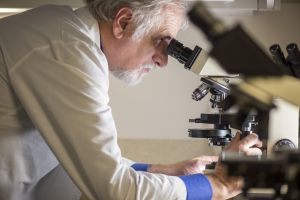November 16, 2018
November 16, 2018
Female fertility is greatly affected by age. After puberty, female fertility increases until the 20s, then decreases after the early 30s. There is a dramatic drop beginning around 35, with spontaneous pregnancy being rare in women aged over 44.

This is largely due to the fact that a woman’s complement of eggs is fixed before birth. Even before puberty, eggs begin to develop every day and unless ovulated, degenerate and cannot be replaced. Menopause, the cessation of menstrual periods, is due to the total loss of eggs. It generally occurs in the mid-40s to mid-50s and marks the absolute cessation of natural fertility.
Understanding the facts of fertility and age is important for women who wish to plan their lives. Two well-conducted studies from France are useful to review. In French women undertaking donor insemination in the early 1980s, the monthly chance of pregnancy was 11% in women under 30, 7.6% at ages 31-35 and 5% over 35. In French women taking no fertility therapy in the early 2000s, the monthly fertility was 11% at age 30, 9% at 35 and 5% at 40. The similarity of these results suggests that the results are accurate and so I have used these numbers for years in counseling my patients.
A 5% monthly fertility rate corresponds to 24% of women being pregnant within 6 months. An 11% monthly fertility rate corresponds to 51% of women being pregnant within 6 months.
This relationship between age and female fertility is often referred to as the “biological clock,” and it must not be ignored. However, our modern culture encourages delaying childbearing, with the result that many healthy women who were perfectly fertile at 30 will have infertility problems at 35 or 40. This creates the frustrating problem of infertility in women who had every expectation of being able to delay childbearing until a desired time.
Extending the Biological Clock
Various lifestyles and medical techniques have been suggested to maintain female fertility. Attempts to preserve functional eggs within the ovary by suppressing ovulation with birth control pills or hormone-reducing injections have failed, because the initial development of the egg is spontaneous and not hormonally-induced.
Several successful techniques have lately been developed. From advanced reproductive therapies, we have learned to stimulate the ovaries to make numerous eggs, which can now be harvested with a needle and frozen for future use even without being fertilized. This is an exquisitely fine technique, as the mature human egg is in the process of dividing its DNA, but it has proven successful. Freezing unfertilized eggs permits a woman to preserve her fertility without concern for a particular partner.
Another option, which is more radical but simpler in technique, is to perform a laparoscopy (a “belly button” operation) and to surgically remove strips of normal ovary, which are then frozen. At the desired time, these can be transferred back into the abdomen and used to create a spontaneous pregnancy. This technique, which has the advantage of not requiring a prolonged hormonal treatment, is especially useful for women who are found to have fertility-wasting cancers; to perform a laparoscopy requires only a few days’ delay in their cancer therapy, which is likely innocuous, while allowing the long term maintenance of fertility, albeit with the necessity of a second procedure after the woman is cancer-free.
Egg number and quality is not the only factor leading to reduced fertility. Older women tend to have older partners, who are likely to have lower sperm counts. The passage of years allows the development of anatomic issues, metabolic problems and chronic disease which impact fertility, including fibroids, endometriosis, anovulation (lack of ovulation in the menstrual cycle), insulin resistance, polycystic ovaries, thyroid disorders and diabetes.
Fertility Preservation
All of these matters can be addressed, but this takes time and effort and is not always successful. A useful guide that I used in my practice for 25 years is to advise women to have their first baby by 35 and their last by 40. Women who choose to delay having children to after 35 should live fertility-enhancing lives. They should not smoke tobacco or marijuana, should maintain healthy weight and exercise regularly. They should also give serious thought to egg preservation, which can extend “normal” fertility until the 50s.
Fertility preservation with egg banking or ovarian preservation is neither simple nor cheap, but it is effective. At Cooley Dickinson, we are privileged to have the opportunity to offer these cutting-edge therapies in conjunction with the fertility center at Massachusetts General Hospital, which has well-developed expertise in each of these therapies. Women or couples interested in discussing fertility issues can consult with me at CDMG Women’s Health, where we are able to evaluate fertility, look for problems that need to be addressed and explore options.
Robert Howe, MD, FACOG, is a reproductive endocrinologist with extensive experience in fertility and infertility. After 29 years of academic and private practice, he joined Cooley Dickinson this year to offer complete fertility services to the greater Pioneer Valley community.

